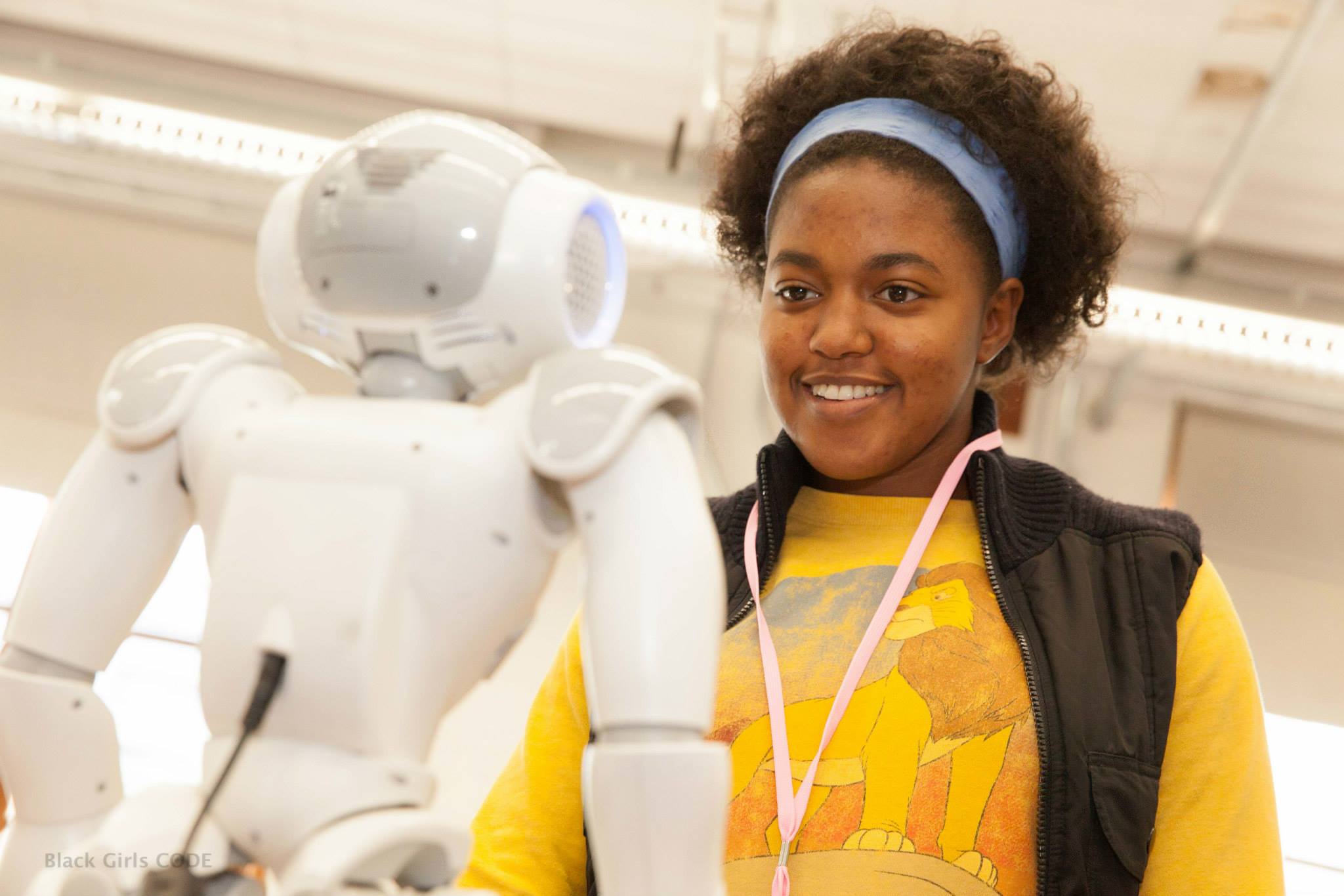By Devin Partida
 Image source: Black Girls Code
Image source: Black Girls Code
Diversity and inclusion are vital to creating a robotics education curriculum that invites all students to explore STEM. Many teachers today, at all levels, are working hard to make their approach more inclusive and equitable for all kids.
It can sometimes be confusing working out where to get started. These tips can be used in any classroom, for any type of course. They’ll give you a place to start building your inclusive robotics education strategy from so you can make the world of STEM accessible to all students.
Building Community in the Classroom
Everyday classroom practices greatly impact diversity and inclusion in STEM education. It is important to remember that science itself may be unbiased and fact-based, but the STEM community may not be. You will have to meet students where they are. Sometimes that will mean helping kids understand they do have a place in STEM and robotics, regardless of what societal constructs or biases may tell them.
There are many ways to do this. For instance, use diverse examples when showing real-life robotics engineers or physicists, both in terms of appearance and neurodiversity. Dive into the backgrounds of the scientists you discuss, too.
You may have neurodiverse students who would be motivated to hear that Albert Einstein had ADHD, as modern psychologists believe today. Some other great STEM leaders to discuss are Dorthy Vaughn, a Black NASA scientist vital to the Apollo missions, and Michio Kaku, one of today’s leading theoretical physicists and a member of the AAPI community.
Remember, there is a difference between diversity and inclusion — a classroom can be diverse without being inclusive. Inclusion is about enabling diversity to thrive, so teachers should prioritize building a community in their classrooms. Strengthening diversity in robotics relies on helping students realize that everyone and anyone can be an engineer, a programmer or any other profession in STEM.
Be open to students’ different perspectives, approaches and experiences with STEM. Not all kids will come into class with the same level of STEM literacy. Assuming so can isolate them and reinforce negative stereotypes of who can and can’t be an engineer. Children who are reluctant to explore STEM may be helped by making it more approachable. Show how it directly connects to students’ communities and what they know, rather than using abstract, distant examples.
Making Robotics Equitable for All Students
How can you ensure robotics education is inclusive and accessible to all students? It is a serious challenge — engineering remains one of the least diverse STEM professions in the world. As of 2021, 71% of engineers were white and only 15% were women. Only 5% were Black. Additionally, people of color and women continue to earn significantly less than their white male counterparts do in STEM careers.
Luckily, teachers can help change this by giving all students an equitable opportunity to succeed in robotics education. A great place to start is creating projects that are accessible to all kids. Focus on equity rather than equality. Equity meets students where they are and gives everyone a level playing field, considering any disadvantages they may have.
For instance, research on building inclusive robotics lessons suggests using tools like Scratch, a free and approachable online coding platform founded by MIT. Scratch doesn’t assume any prior programming knowledge, making code easy to understand and put into practice.. Platforms like this can ensure no student feels like they are out of their depth or don’t belong in robotics.
Hands-on projects are the way to go, as opposed to more abstract or worksheet-focused lessons. There are few things as motivating as building a robot yourself and seeing it work. This feeling of success can be so vital for engaging students and inviting them into robotics, no matter who they are or where they come from.
Build projects and groups designed to bring everyone in and encourage community. Get creative, too. Invite kids to apply robotics to their cultures, communities, hobbies and passions. A great example of a teacher putting this into action is Dr. Carlotta Berry, a professor of engineering and a Black woman. She uses robot hip-hop performances to help students of color feel welcome and have fun in robotics classes.
Teaching STEM for Everyone
Robotics, programming and engineering are among the most in-demand professions in the world today. That trend is only going to grow as automation takes over more tasks. Promoting diversity and inclusion in robotics education is vital for ensuring all students have an equitable opportunity to succeed in the evolving career landscape.
Building STEM confidence and making robotics approachable are key steps to giving everyone a place in the amazing world of robotics. Teachers are the key to creating a more diverse, inclusive and equitable STEM community.
Learn more about Robotics with RobotLAB
For over a decade, RobotLAB is leading the Educational Robotics market with an innovative approach that makes Robotics and VR truly useful in the hands of educators. Our passionate team will guide you from point A to Z and beyond.
Check our robotics products!




